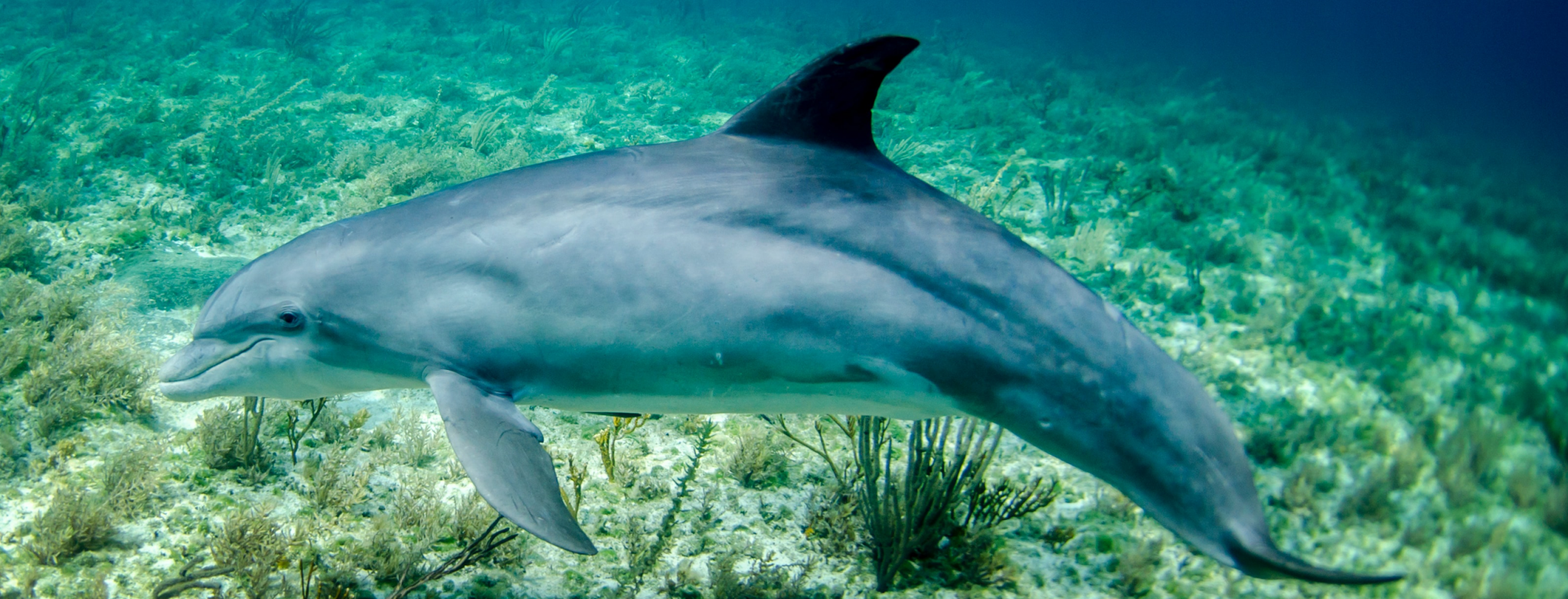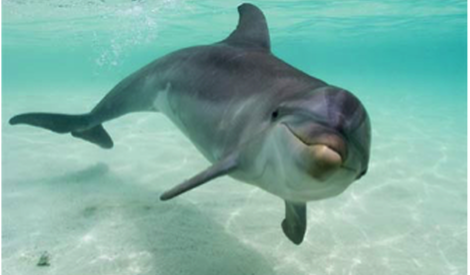-
 DOLPHINSGET INVOLVED
DOLPHINSGET INVOLVED
Facts about Dolphins
- The name Dolphin comes from the Greek words delphis and delphus, meaning dolphin and womb.
- Dolphins can swim at a speed of up to 25 miles (40,2 km) per hour for a long time. That is about three times faster than the fastest humans in the world. Short-beaked common dolphins can swim at a speed of up to 60 km/h.
- A dolphin can dive up to 1,000 feet (305 meters).
- The lifespan of a dolphin is 25-50 years. However, their lifespan is reduced by 50% while held in captivity.
- Dolphin is the only mammal that gives birth with the tail first instead of the head.
- A dolphin calf nurses for up to 2 years and will stay with its mother for 3 – 8 years.
- Young dolphins are called calves; female adults are cows, and male adults are bulls.
- The smallest dolphins (Hector’s dolphin) are about 4 feet (1.2 m) long, with the longest being 30 feet (9.1 m). The Orca is the largest member of the dolphin family and can be up to 30 feet (9.1m) in length.
- Dolphins can weigh from 90 pounds (40.8 kg) to more than 11 tons (9.979 kg). The Bottlenose dolphin weigh between 300 to 1,400 pounds (136-635 kilos).
- Dolphins have a poor sense of smell.
- Dolphins have two stomachs, just like cows. The first one stores the food, and the second one is where digestion takes place.
- Each dolphin’s dorsal fin is unique and can be used to identify them from each other.
- Most species of dolphins live in saltwater, but some of them thrive in freshwater.
- The Boto is the largest of the dolphins that can live in freshwater. They can be up to 10 feet (3m) long.
- All dolphins have a blowhole at the top where they take in air when they come to the surface.
- Dolphins breathe air into their lungs, just like we do.
- A dolphin needs to get air at different intervals. Some need air in less than a minute, and others only need it every 15 minutes.
- After humans, dolphins have the greatest brain-to-body-weight ratio.
- Only one side of the dolphin’s brain sleeps at a time. That allows them to be able to breathe and to be able to watch for threats even while they are resting.
- A group of dolphins is called a pod or a school.
- The bonds of dolphins in a pod are very intense. They have been seen caring for the sick, the elderly, and those that have been injured with great care.
- Even though they are usually mild-tempered and friendly, dolphins can get aggressive when threatened or provoked by humans.
- Dolphins can see well in the water due to the retina gathering light in a unique way.
- A mature dolphin can eat up to 30 pounds (13.6 kg) of fish daily.
- There are about 100 teeth in the mouth of a dolphin. They use the teeth to grab their prey, but they don’t chew it. All food is swallowed whole.
- Dolphins often use a hunting tactic of circling the fish in a school so that they make a tight ball. Then they will take turns going through the center of the ball to feed as they do so.
- Dolphins enjoy socializing and playing. They play with seaweed or with other members of the pod. Sometimes, they will tease other living creatures in the water.
- A dolphin can leap up to 20 feet (6.1 m) in the air.
- Dolphin’s skin is very delicate, and it can easily be damaged by contact with other surfaces.
- A dolphin tale is called a fluke.
- Almost all dolphins have no hair other than a few that they have at birth. Only the Boto River Dolphin has a small amount of hair that they will keep as an adult.
- Dolphins have a fast healing process for their bodies even when they have deep wounds, such as those that are the result of shark bites. Experts haven’t been able to determine how this is possible for dolphins when other mammals would hemorrhage.
- Echolocation is a big part of overall communication for dolphins. It occurs through the melon in the head.

